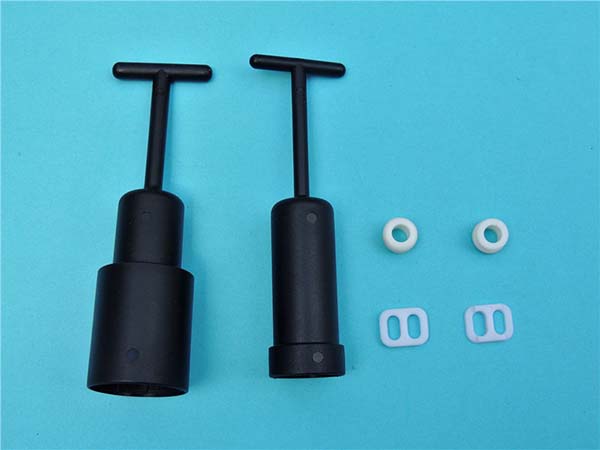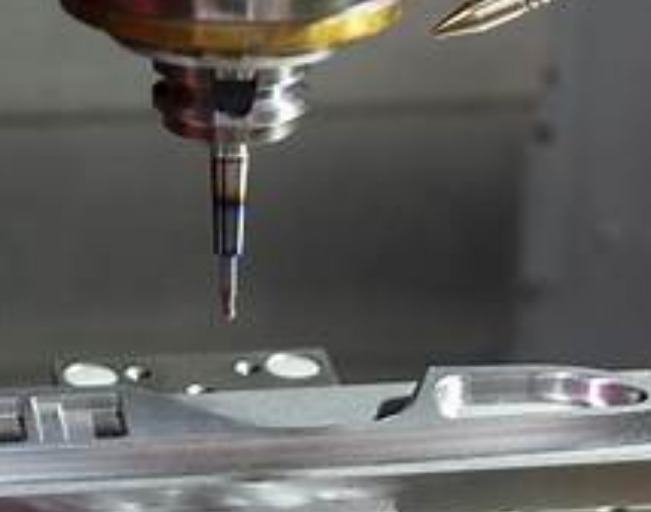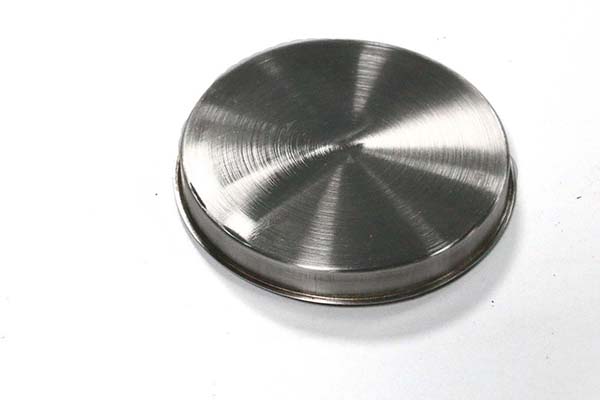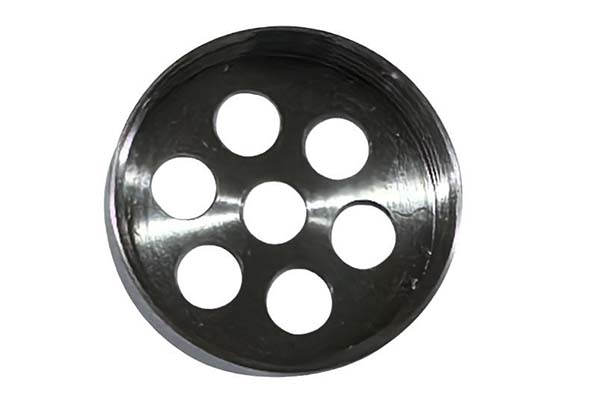If you’ve ever struggled to machine hard metals like titanium or Inconel, or needed to create complex shapes with tight tolerances, you’re not alone. Traditional machining methods often hit limits with these challenges—but the electrical discharge machining process (EDM) offers a powerful solution. In this guide, we’ll break down everything you need to know about EDM, from how it works at a basic level to advanced techniques that can boost your production efficiency. Whether you’re a CNC shop owner, a manufacturing engineer, or just curious about non-traditional machining, this article will answer your most pressing questions and help you decide if EDM is right for your projects.
1. EDM Process Fundamentals: How Does It Actually Work?
At its core, EDM is a thermal machining process that doesn’t rely on physical cutting tools. Instead, it uses controlled electrical sparks to erode material from a workpiece—hence the term spark erosion. Let’s break down the key components and steps that make this possible.
Key Components of an EDM System
Every EDM machine has five essential parts, each playing a critical role in the process:
- Electrode: A conductive tool (often made of graphite or copper) that delivers electrical pulses to the workpiece.
- Workpiece: The conductive material you want to shape (e.g., steel, aluminum, tungsten).
- Dielectric Fluid: An insulating liquid (like deionized water or mineral oil) that cools the system, flushes away debris, and helps initiate sparks.
- Pulse Generator: Creates short, high-voltage electrical pulses that flow between the electrode and workpiece.
- Servo Control System: Maintains a precise spark gap (usually 0.001–0.02 mm) between the electrode and workpiece—too small, and they’ll short-circuit; too large, and no sparks form.
The Spark Erosion Process in Action
Here’s a step-by-step look at what happens during a single EDM cycle:
- The pulse generator sends an electrical charge to the electrode.
- The dielectric fluid between the electrode and workpiece ionizes (turns into a conductive path called an ionization channel) due to the high voltage.
- A spark jumps across the spark gap, reaching temperatures of 8,000–12,000°C. This heat melts and vaporizes a tiny amount of the workpiece material.
- The pulse ends, and the dielectric fluid flushes away the melted debris (preventing reattachment to the workpiece).
- The servo control adjusts the electrode position to maintain the ideal gap, and the cycle repeats—hundreds or thousands of times per second.
Real-World Example: A medical device manufacturer I worked with needed to create tiny, intricate holes in stainless steel surgical needles. Using EDM, they achieved a hole diameter of 0.1 mm with a tolerance of ±0.005 mm—something impossible with traditional drilling tools. The dielectric fluid (deionized water) also ensured the needles stayed free of burrs, critical for patient safety.
2. Process Parameters and Control: How to Tune EDM for Perfect Results
The success of an EDM project depends entirely on tuning the right parameters. Even small adjustments can mean the difference between a smooth finish and a damaged workpiece. Below, we’ll cover the most critical parameters, how they interact, and how to optimize them for your goals.
Critical EDM Parameters and Their Effects
| Parameter | Definition | Impact on Process |
| Pulse On Time (Ton) | The duration of each electrical pulse (microseconds). | Longer Ton = more material removed (higher metal removal rate, MRR) but rougher surface. |
| Pulse Off Time (Toff) | The time between pulses (microseconds). | Longer Toff = less heat buildup (reduces thermal stress) but lower MRR. |
| Current Setting (Ip) | The peak current of each pulse (amps). | Higher Ip = faster MRR but deeper heat-affected zone (HAZ). |
| Gap Voltage (Vg) | The voltage needed to initiate a spark across the gap. | Higher Vg = larger gap (better for flushing) but slower spark initiation. |
| Polarity | Whether the electrode is positive (anode) or negative (cathode). | For most metals: Negative electrode = less electrode wear; Positive = faster MRR. |
| Flushing Pressure | The pressure of the dielectric fluid flowing through the gap. | Higher pressure = better debris removal (prevents short circuits) but may cause vibration. |
Practical Tuning Tips for Common Goals
- Maximize MRR (Roughing): Use long Ton (100–500 µs), high Ip (20–100 A), and short Toff (20–50 µs). Example: A tool and die shop I consulted for used these settings to rough out a 50 mm deep mold cavity in H13 steel—cutting time by 40% compared to their old parameters.
- Minimize Surface Roughness (Finishing): Use short Ton (5–20 µs), low Ip (1–5 A), and longer Toff (50–100 µs). This reduces heat input, resulting in a surface finish as smooth as Ra 0.1 µm. A luxury watch manufacturer used this approach to finish titanium watch cases, achieving a mirror-like surface without additional polishing.
- Balance Speed and Precision: For most general applications, aim for Ton = 20–50 µs, Ip = 5–15 A, and Toff = 30–60 µs. This sweet spot works well for parts like automotive engine components, where both speed and accuracy matter.
Key Fact: According to a study by the Journal of Manufacturing Processes, optimizing pulse on time and flushing pressure together can reduce EDM cycle time by up to 35% while maintaining surface quality.
3. Material Interaction and Effects: What Happens to Your Workpiece?
While EDM is great for hard-to-machine materials, it does leave a mark on the workpiece. Understanding these effects is critical for applications where strength, durability, or precision is non-negotiable (like aerospace or medical parts).
The Three Main Surface Layers from EDM
After EDM, your workpiece will have three distinct layers:
- Recast Layer: The topmost layer (5–50 µm thick) where molten material reattaches to the workpiece. It’s hard but brittle, and can crack under stress. For critical parts (e.g., aircraft landing gear components), this layer must be removed via grinding or chemical etching.
- Heat-Affected Zone (HAZ): The layer beneath the recast layer (10–100 µm thick) where the material’s microstructure changes due to heat. For heat-treated metals like tool steel, the HAZ may lose hardness, reducing the part’s wear resistance.
- Base Material: The unaffected material below the HAZ, maintaining its original properties.
Common Material-Related Challenges and Solutions
- Micro-Cracking: Cracks form in the recast layer when thermal stress exceeds the material’s strength. This is common with high-carbon steels. Solution: Use shorter pulse on times, lower current, and post-EDM stress relief annealing. A defense contractor I worked with solved their micro-cracking issue by reducing Ip from 15 A to 8 A and adding a 2-hour annealing step at 600°C.
- Poor Surface Integrity: Roughness or burrs can affect part performance (e.g., seals in hydraulic systems). Solution: Combine finishing EDM with abrasive flow machining (AFM) to smooth the surface and remove the recast layer.
- EDM Debris Buildup: Melted material can clog small features (like holes or slots), leading to dimensional errors. Solution: Increase flushing pressure or use a vacuum-assisted flushing system. A electronics manufacturer reduced debris-related rejects by 70% by switching to a dual-nozzle flushing setup.
Expert Insight: For materials like titanium or Inconel (common in aerospace), the HAZ is particularly sensitive to heat. I recommend using powder-mixed EDM (more on this later) to reduce HAZ depth by up to 40% compared to conventional EDM.
4. Process Variations and Techniques: Which EDM Method Is Right for You?
EDM isn’t a one-size-fits-all process. Over the years, manufacturers have developed specialized variations to tackle specific challenges—from micro-machining tiny parts to roughing large mold cavities. Let’s compare the most popular techniques.
Common EDM Variations: Pros, Cons, and Use Cases
| Technique | How It Works | Best For | Pros | Cons |
| Roughing EDM | Uses high current and long pulses to remove material quickly. | Large parts, mold cavities, initial shaping. | Fast MRR, low cost per unit volume. | Rough surface finish, deep HAZ. |
| Finishing EDM | Uses low current and short pulses for precision and smoothness. | Medical parts, aerospace components, final part finishing. | Smooth surface (Ra 0.1–1.6 µm), minimal HAZ. | Slow MRR, higher cost. |
| Micro-EDM | Miniaturized electrodes and ultra-short pulses for tiny features. | Micro-components (e.g., sensor probes, micro-gears). | Can create features as small as 0.001 mm. | Very slow, requires high precision setup. |
| Powder-Mixed EDM | Adds fine powder (e.g., aluminum, silicon carbide) to the dielectric fluid. | Improving surface finish and reducing HAZ. | Smoother finish, shallower HAZ. | Higher fluid cost, requires powder filtration. |
| Dry EDM | Uses gas (e.g., air, nitrogen) instead of liquid dielectric. | Parts where liquid dielectric would cause contamination (e.g., electronics). | No fluid cleanup, eco-friendly. | Lower MRR, higher electrode wear. |
| Vibration-Assisted EDM | Adds small vibrations to the electrode or workpiece to improve flushing. | Deep slots or blind holes (where debris gets trapped). | Reduces short circuits, faster MRR. | Requires vibration control system. |
Case Study: A smartphone manufacturer needed to machine tiny copper connectors for 5G antennas. Conventional EDM kept clogging the 0.05 mm slots, leading to 20% rejects. Switching to vibration-assisted EDM (100 Hz vibration, 5 µm amplitude) improved flushing, cutting rejects to 2% and increasing production speed by 15%.
Adaptive Control EDM: The Future of Smart Machining
One of the most exciting advancements in EDM is adaptive control EDM. This technology uses sensors to monitor real-time process data (like gap voltage, current, and spark frequency) and automatically adjusts parameters to maintain optimal performance. For example:
- If debris clogs the gap, the system increases flushing pressure.
- If the electrode wears too quickly, it adjusts polarity or current.
Real-World Impact: A large automotive supplier I worked with installed adaptive control EDM on their mold-making lines. They saw a 25% reduction in setup time (no more manual parameter tweaks) and a 18% increase in tool life—saving over $100,000 per year in electrode costs.
5. Electrode Technology and Design: The Unsung Hero of EDM
The electrode is just as important as the workpiece in EDM—poor electrode design or material choice can ruin even the best-tuned process. Let’s cover how to select, design, and maintain electrodes for optimal results.
Electrode Material Selection: Graphite vs. Copper
The two most common electrode materials are graphite and copper. Here’s how they compare:
- Graphite:
- Pros: Low cost, high thermal conductivity (resists melting), and easy to machine into complex shapes. Ideal for roughing and large electrodes.
- Cons: Brittle (can break during machining) and produces more dust (requires ventilation).
- Best For: Mold cavities, large parts, and high-current applications.
- Copper:
- Pros: High precision (holds tight tolerances), low wear, and smooth surface finish. Great for finishing.
- Cons: More expensive than graphite and harder to machine into complex shapes.
- Best For: Micro-EDM, finishing operations, and parts requiring tight tolerances (e.g., medical implants).
Data Point: According to a study by EDM Today, graphite electrodes have 30–50% lower wear rates than copper in high-current roughing applications, but copper electrodes produce 20–30% smoother surface finishes in finishing.
Electrode Design Best Practices
- Geometry Matters: Avoid sharp corners—they concentrate electrical energy, leading to uneven wear and poor surface finish. Use rounded edges (minimum radius of 0.1 mm) instead.
- Size for Wear: Account for electrode wear (usually 5–15% of the electrode size) when designing. For example, if you need a 10 mm slot, make the electrode 9.8 mm to compensate for wear.
- Flushing Channels: Add small channels (1–2 mm diameter) in the electrode to improve dielectric fluid flow. This is critical for deep features like blind holes.
Example: A tool maker I advised was struggling with uneven wear on a graphite electrode for a plastic injection mold. By adding two 1.5 mm flushing channels and rounding the corners (from 0.05 mm to 0.2 mm radius), they reduced wear by 40% and extended electrode life from 50 parts to 80 parts.
3D Electrodes and Wear Compensation
For complex parts (like turbine blades or dental implants), 3D electrodes (machined from solid blocks using 5-axis CNC) are a game-changer. They allow for precise shaping of undercuts, curves, and other hard-to-reach features.
To combat wear, most modern EDM machines include wear compensation software. This feature tracks how much the electrode wears during machining and adjusts its position in real time to maintain dimensional accuracy. For example, if the electrode wears 0.02 mm on one side, the software shifts the electrode 0.02 mm to keep the feature size correct.
Yigu Technology’s Perspective on Electrical Discharge Machining Process
At Yigu Technology, we believe the electrical discharge machining process is a cornerstone of modern precision manufacturing, especially as industries demand smaller, harder, and more complex components. From our experience supporting automotive, medical, and aerospace clients, we’ve seen EDM evolve from a niche tool to a mainstream solution—thanks to advancements like adaptive control and 3D electrodes. We often recommend powder-mixed EDM for clients prioritizing surface integrity, as it balances speed and quality better than traditional methods. Additionally, we emphasize electrode material selection: pairing graphite for roughing with copper for finishing can cut production time by 20–30% while maintaining precision. As manufacturing trends shift toward miniaturization and sustainability, we expect dry EDM and smart adaptive systems to become even more critical—helping clients reduce waste and improve efficiency.
FAQ: Common Questions About Electrical Discharge Machining Process
- Can EDM machine non-conductive materials?
No, EDM requires both the electrode and workpiece to be conductive. For non-conductive materials (like ceramics or plastics), you’ll need to use a different process (e.g., laser machining).
- What’s the maximum material thickness EDM can handle?
EDM can machine materials up to 300 mm thick, but thicker parts require better flushing (e.g., through-hole flushing) to remove debris. For parts over 100 mm, expect longer cycle times.
- How accurate is EDM?
Modern EDM machines can achieve tolerances as tight as ±0.001 mm, making them ideal for precision applications like medical devices and aerospace components.
- Is EDM expensive compared to traditional machining?
EDM has higher upfront costs (machines cost \(50,000–\)500,000) but lower per-part costs for complex or hard-to-machine parts. For simple parts (e.g., flat plates), traditional machining is cheaper.
- How do I maintain an EDM machine?
Key maintenance steps include: changing the dielectric fluid every 6–12 months, cleaning flushing nozzles weekly, calibrating the servo system monthly, and inspecting electrodes for wear before each use.








